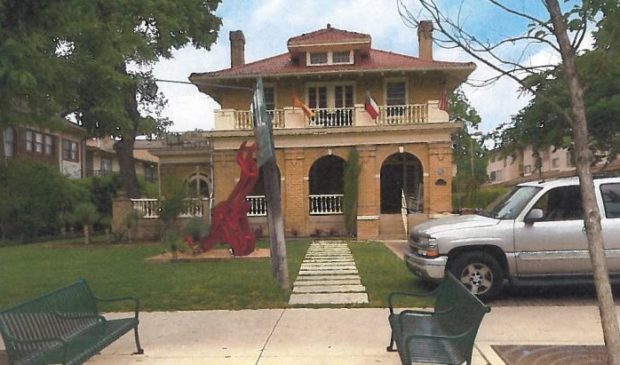Historic Landmark Commission once again denies development proposal for Parker House
Wednesday, May 27, 2020 by
Jessi Devenyns The family-owned Parker House sits on a 0.32-acre tract of land in West Campus that is worth $1.7 million. In an effort to preserve the historic home at 2404 Rio Grande St. and also develop the back portion of the lot, the property owners applied for removal of the historic zoning from the rear of the property.
Additionally, the owner is requesting to change the base zoning for the entire property to Community Commercial – Mixed-Use (GR-MU) to allow for commercial and residential uses on the site. The site is currently zoned historic General Office – Neighborhood Plan (GO-NP) in the front and historic Multifamily Residence – Moderate-High Density – Neighborhood Plan (MF4-NP) on the back half.
The landmark commission unanimously denied the request at its May 18 meeting, as the applicant did not present development plans for the back of the property in conjunction with the application to remove the historic zoning.
“I’m reluctant to give away the historic zoning without a definite plan and without a mandatory requirement of setback that includes air space,” Commissioner Terri Myers said. Commissioner Ben Heimsath said “nipping away” the historic properties without a plan is “irresponsible.”
Glen Coleman, who was representing the applicant, told the Austin Monitor that there is currently no defined development plan for the property. “If we can remove the zoning, then we can start looking at a real design for the property,” he said.
Historic Preservation Officer Steve Sadowsky noted that in the past two years, the property owners have created various proposals to add value to the property. The first plan to come before the landmark commission in 2018 was to move the house 40 feet to the edge of the sidewalk. At the time, the landmark commission was unable to approve the plan on the grounds that it will alter the context of the property on the street. Following that, Sadowsky said the owners came to the commission’s Certificate of Appropriateness committee for input on alternative designs for which the commissioners offered their seal of approval.
In those plans, the parking lot in the back of the property is converted into a four-story building that is 5.5 feet away from the historic home. Coleman told the Monitor that while those plans had not been discarded, “We are exploring other options which would provide significantly more housing in the West Campus district.”
However, the lack of reference to the design plans commissioners had previously approved in the most recent request for the removal of historic zoning caused some concern for both staff and those on the dais. Removing historic zoning without a commitment to a specific plan will remove the city’s authority to review the proposed new construction on the site. The only restriction will be a 15-foot buffer around the historic home, according to Sadowsky.
Sadowsky told the Monitor in an email, “We have found that 15 feet is the minimum separation to maintain the articulation and preserve the context of the historic building to the greatest extent possible while still allowing for new development on the site.” He said there are occasions when the buffer extends 25 feet, but “I cannot think of any case where we recommended anything less than 15 feet.”
The prospect of having limited ability to review design plans for the lot caused trepidation among the commissioners. “Now they don’t want to show us the project,” Commissioner Heimsath said. “I can’t imagine that it’s going to be better.”
“We can ask them to come back to the commission with specific plans,” Myers said.
While Coleman said he was amenable to presenting plans to the commission once they are designed, he said there is no timeline on their development. “I’m reluctant to make a representation about exactly what that’s going to look like. We don’t even know what the University Neighborhood Overlay itself will allow in two years’ time,” he said.
Commissioners Mathew Jacob, Kevin Koch, Alex Papavasiliou, and Blake Tollett were absent.
The Austin Monitor’s work is made possible by donations from the community. Though our reporting covers donors from time to time, we are careful to keep business and editorial efforts separate while maintaining transparency. A complete list of donors is available here, and our code of ethics is explained here.
You're a community leader
And we’re honored you look to us for serious, in-depth news. You know a strong community needs local and dedicated watchdog reporting. We’re here for you and that won’t change. Now will you take the powerful next step and support our nonprofit news organization?






